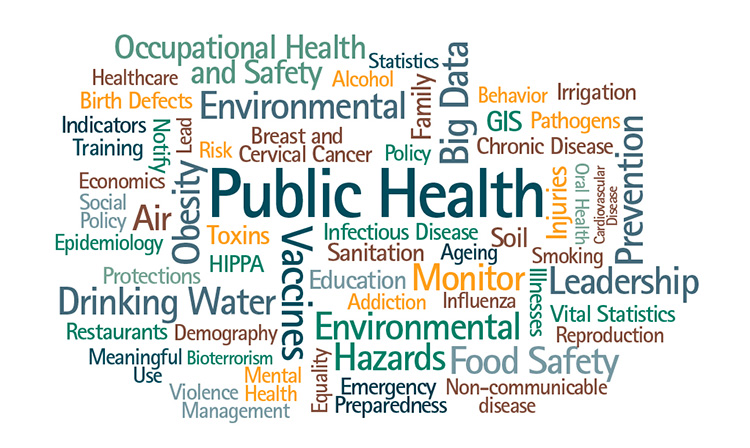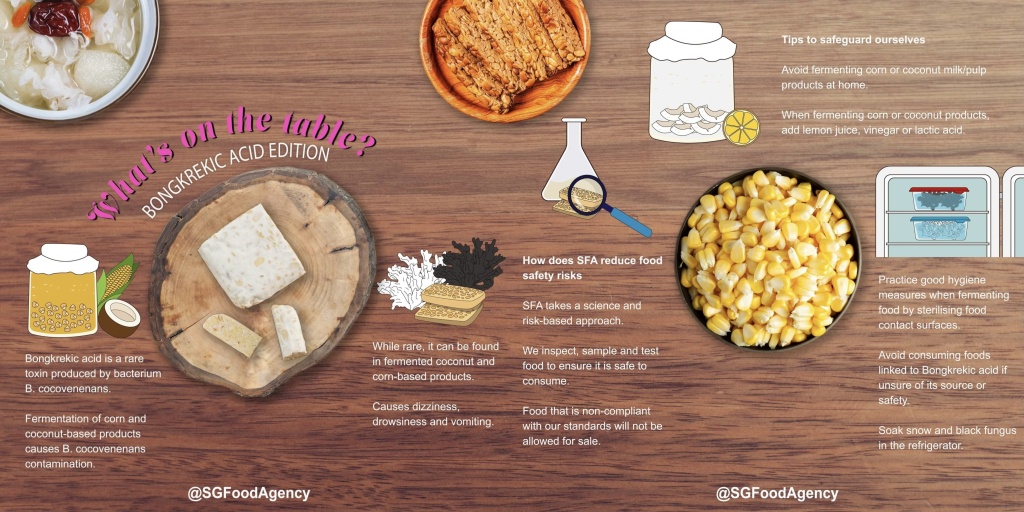Author: “Sharon” Chenyun Hu
Published: 04/09/24 Updated: 04/09/24

What is public health? The answer is different for every individual. According to the CDC (2021), “Public health is the science and art of preventing disease, prolonging life, and promoting health through the organized efforts and informed choices of society, organizations, public and private communities, and individuals.” In a nutshell, public health encompasses efforts to protect and improve the health of communities and populations through various interventions and policies.
In terms of food safety, public health focuses on the prevention of foodborne illnesses and the promotion of safe food handling practices to protect the health of populations. It involves the identification, assessment, and management of risks associated with the consumption of food products. The 2024 bongkrekic acid food poisoning incident in Taiwan serves as an illustrative example of public health principles in action. Before disclosing more about the incident, let’s learn about bongkrekic acid.
What Is Bongkrekic Acid?

Bongkrekic acid, also known as bongkrek acid, is a highly toxic respiratory toxin. It is found in fermented coconut or corn that has been contaminated and is known for its heat stability and lack of color, odor and taste, making it particularly dangerous because it cannot be detected by smell or taste in contaminated food.
When ingested through contaminated food, bongkrekic acid primarily affects the liver, brain and kidneys. The symptoms including lack of energy, dizziness, drowsiness, abdominal pain, vomiting, diarrhea, and excessive sweating. Due to its potency, there is no safe dose of bongkrekic acid, and even small amounts can be fatal. Treatment for poisoning is limited to supportive care, as there is no antidote available (TN World Desk, 2024).
How was Bongkrekic Acid Detected In Taiwan?
Between March 18 and 24, 2024, 34 people felt ill after dining at the Xinyi District branch of Malaysian restaurant chain, Polam Kopitiam. Among these 34 people, two died, seven remain hospitalized and four of them are in critical condition, and the rest of them are recuperating at home as on April 6. All the individuals showed food poisoning symptoms after consuming rice noodles contaminated with bongkrekic acid, a highly toxic substance produced by certain bacteria.
Forensic experts at National Taiwan University were able to conduct bongkrekic acid testing on these food poisoning patients after the hospital treating. They voluntarily provided samples needed for testing, and the results were positive. The autopsies also showed traces of Bongkrekic acid in specimen collected from the two victims’ bodies (TN World Desk, 2024).
What Key Aspects of Public Health were Highlighted in This Outbreak?

First, surveillance and monitoring. The incident underscored the importance of surveillance systems in detecting and monitoring outbreaks of foodborne illnesses. Prompt detection allowed public health authorities to identify the source of contamination and implement control measures to prevent further spread of the illness.
Second, communication and risk communication. Effective communication played a crucial role in informing the public about the risks associated with consuming contaminated food products. Public health agencies used various communication channels to disseminate information, issue warnings, and provide guidance on preventive measures to protect public health.
Third, collaboration and coordination. The response to the outbreak required collaboration and coordination among various stakeholders, including government agencies, healthcare providers, food industry stakeholders, and community organizations. This multi-sectoral approach facilitated a comprehensive and timely response to the crisis, ensuring access to healthcare services and support for affected individuals.
Fourth, regulation and policy development. The incident prompted a review of existing food safety regulations and led to the implementation of stricter measures to prevent similar occurrences in the future. Public health policymakers revisited food safety standards and implemented regulatory measures to ensure the integrity of the food supply chain and protect public health.
Finally, education and prevention. Public health efforts focused on educating the public about the risks of bongkrekic acid poisoning and promoting preventive measures to reduce exposure to contaminated food products. This included raising awareness about proper food handling practices, advising consumers on safe food choices, and encouraging reporting of suspected cases of contamination to public health authorities.

In conclusion, the outbreak of bongkrekic acid poisoning in Taiwan in 2024 highlighted the importance of surveillance, communication, collaboration, regulation, and education in protecting public health and responding effectively to foodborne illness outbreaks. By doing so, public health authorities can effectively respond to emergencies, mitigate risks, and promote healthier environments for all.
#H549 #ThisisPublicHealth
To learn more about bongkrekic acid poisoning and food safety:
Reference
CDC. (2021, January 22). Introduction to Public Health. Public Health 101 Series. https://www.cdc.gov/training/publichealth101/public-health.html
TaiwanPlus News. (2024, April 2). Fatal toxin found in Taipei restaurant food poisoning scandal [Video]. YouTube. https://www.youtube.com/watch?v=phbuWr2MDcM
TN World Desk. (2024, March 30). What is bongkrekic acid, toxin at center of Taipei’s food poisoning outbreak? TimesNow. https://www.timesnownews.com/world/asia/what-is-bongkrekic-acid-toxin-at-center-of-taipeis-food-poisoning-outbreak-article-108885706